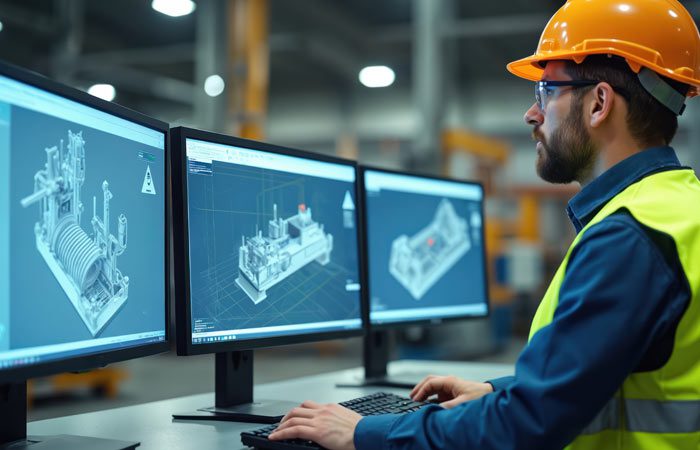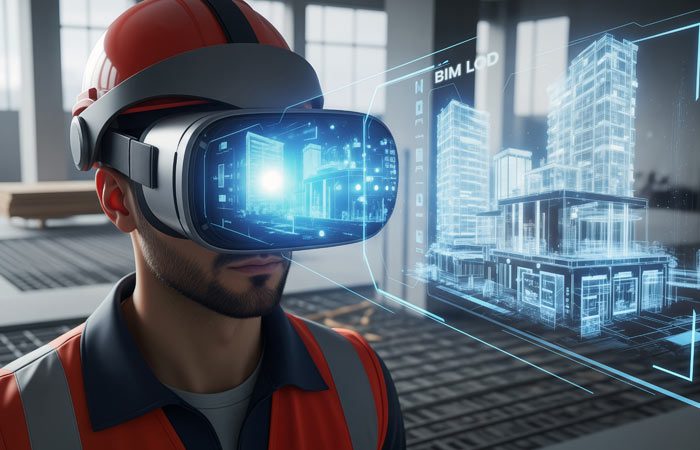
Energy Modeling & Simulations: Key Tools in LEED Engineering
In the drive toward sustainable building design and performance, energy modeling and simulations have become indispensable tools for engineers and architects striving for LEED (Leadership in Energy and Environmental Design) certification. As green building standards tighten globally and operational energy costs rise, energy modeling helps ensure that new and existing buildings perform as efficiently as planned — or better.
Within the framework of LEED, these tools are not just helpful—they’re fundamental to compliance and optimization.
What is Energy Modeling?
Energy modeling is the process of creating a computer-based simulation of a building’s energy use. These simulations consider a wide variety of factors, including:
- Building orientation and massing
- Envelope insulation and thermal mass
- Lighting and HVAC systems
- Occupancy patterns and plug loads
- Weather and climate data
- Renewable energy sources
By analyzing these elements, engineers can estimate how much energy the building will consume on an annual basis and how different design decisions will impact performance.
Role of Energy Modeling in LEED Certification
LEED is one of the most widely recognized green building rating systems in the world. One of its key credit categories, Energy and Atmosphere (EA), incentivizes reductions in energy use through better design, system selection, and commissioning practices. The energy performance credit within this category awards points based on percentage improvement in energy cost savings compared to a baseline building defined in ASHRAE Standard 90.1.
Here’s where energy modeling becomes critical: It allows engineers to compare the proposed design with the baseline and quantify energy and cost savings. This forms the basis for awarding LEED points. For example:
- A 6–10% improvement earns 1–2 points (LEED v4)
- A 50%+ improvement can earn the maximum 18–20 points
These points can often make the difference between LEED Silver, Gold, or even Platinum certification.
Types of Simulations Used
There are different types of energy simulations used during the design and operations phase of a building:
- Early-Stage Conceptual Modeling
Used in schematic design to test how orientation, massing, and window-to-wall ratios affect energy use. Tools like Sefaira, Rhino + Grasshopper, or SketchUp plugins are commonly used.
- Detailed Energy Simulation (Whole-Building Modeling)
Used during the design development phase. Software like eQUEST, EnergyPlus, TRACE 700, or IES VE allows in-depth simulations of HVAC, lighting, and control systems to assess performance relative to baseline models.
- Thermal Comfort and Daylighting Analysis
These simulations optimize occupant comfort and daylight use, which also contribute to LEED credits in Indoor Environmental Quality.
- Post-Occupancy Monitoring and Calibration
Once the building is in use, actual energy performance data is compared to the modeled data to refine simulations and ensure compliance with LEED’s Measurement and Verification (M&V) credit requirements.
Benefits Beyond Certification
While LEED points drive initial interest, the long-term benefits of energy modeling extend well beyond compliance:
- Operational Cost Reduction: Accurate modeling identifies cost-effective energy-saving strategies before construction begins.
- Carbon Footprint Minimization: Reduced energy demand means lower greenhouse gas emissions—a key sustainability goal.
- Improved Equipment Sizing: Modeling ensures right-sized HVAC and electrical systems, avoiding overspending on oversized equipment.
- Informed Trade-Off Decisions: Designers can weigh cost vs. performance to meet client budgets and sustainability goals.
Challenges in Energy Modeling
Despite its advantages, energy modeling comes with a set of challenges:
- Data Accuracy: Garbage in, garbage out—model outputs are only as reliable as the inputs, which can be hard to verify early in design.
- Software Complexity: High-end simulation tools have steep learning curves and often require specialist skills.
- Dynamic Behavior: Real-world user behavior often differs from modeled assumptions, leading to performance gaps.
- Regulatory Compliance: Staying aligned with the ever-evolving versions of ASHRAE 90.1 or local codes requires diligence.
These challenges make it imperative for building owners to partner with experienced energy consultants and engineering firms who specialize in performance modeling and LEED guidance.
TAAL Tech: Engineering Smarter, Greener Buildings
TAAL Tech is a global engineering services provider that brings deep expertise in sustainable building design, MEP engineering, and energy modeling. Their team works with architects, contractors, and green consultants to perform whole-building simulations, HVAC optimization, and daylight analysis to support LEED, IGBC, and other certification efforts.
With advanced tool proficiency and a deep understanding of regional codes and international standards, TAAL Tech ensures their clients meet both environmental goals and operational efficiency targets.
Future of Energy Modeling in Green Engineering
With growing regulatory mandates and decarbonization goals across industries, energy modeling is poised to become even more integral to the building lifecycle. Emerging trends such as:
- AI-driven modeling to automate scenario analysis
- Digital twins for real-time performance monitoring
- Cloud-based platforms for collaborative design
are reshaping the field. As building performance continues to be scrutinized from both environmental and economic lenses, simulations will evolve from being a LEED requirement to an operational necessity.
Energy modeling and simulation are more than just LEED box-checking exercises—they are foundational tools for designing high-performance, sustainable buildings. When done correctly, they guide smarter decisions, save operational costs, and contribute to long-term climate goals.
Whether it’s achieving LEED Platinum or meeting net-zero commitments, accurate modeling is key—and firms like TAAL Tech are leading the charge in delivering data-driven engineering solutions.


